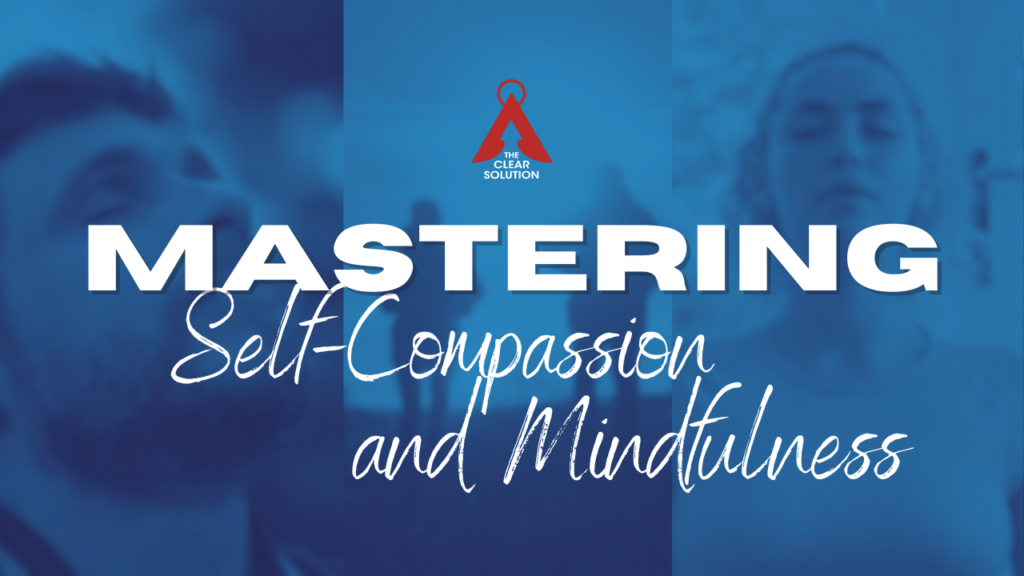In the hustle of our daily lives, we often find ourselves overwhelmed by the demands and challenges we face. It’s in these moments that the practice of self-compassion and mindfulness becomes invaluable. But what does it mean to truly practice self-compassion? How does mindfulness weave into this practice? In this comprehensive guide, we will explore eight transformative steps that will help you cultivate a deeper sense of self-compassion and mindfulness in your life. This journey is about finding kindness for yourself, understanding your own human experience, and learning to navigate life with a gentler, more mindful approach.
Step 1: Understanding Self-Compassion
The journey to self-compassion starts with understanding what it truly means. Self-compassion is the art of being your own best friend, of speaking to yourself with kindness and understanding, especially in times of failure or difficulty. It’s recognizing that suffering, failure, and imperfection are part of the human experience. It’s about being kind to yourself when you would normally be harsh, understanding when you would typically be critical, and accepting when you might usually judge yourself. To start practicing self-compassion, you first need to recognize the common humanity in your experiences. Understand that you’re not alone in your struggles, that everyone goes through tough times, and that it’s okay not to be perfect.
Step 2: Practicing Mindfulness
Mindfulness is the foundation of self-compassion. It’s the practice of being fully present in the moment, aware of where we are and what we’re doing, without being overly reactive or overwhelmed by what’s going on around us. Start by dedicating a few minutes each day to simply sit and breathe. Focus on your breath, the rise and fall of your chest, the air entering and leaving your nostrils. This simple practice can help you anchor yourself in the present moment. When you’re mindful, you’re able to observe your thoughts and feelings without judgment, which is essential for developing self-compassion.
Step 3: Replacing Self-Criticism with Self-Kindness
One of the most significant steps in mastering self-compassion is learning to replace your inner critic with an inner voice of kindness. We often talk to ourselves in ways we would never talk to someone else. It’s important to become aware of this self-criticism and consciously make an effort to soften your self-dialogue. Whenever you catch yourself being self-critical, pause and ask yourself, “Would I say this to a good friend?” If the answer is no, take a moment to reframe your thoughts into something more compassionate and understanding. Practicing this regularly can profoundly shift the way you relate to yourself.

Step 4: Identifying and Challenging Negative Beliefs
We all carry with us a set of beliefs about ourselves. Some of these beliefs are positive, but many can be negative and limiting. These beliefs might come from past experiences, societal messages, or internalized expectations. Identifying these negative beliefs is the first step in challenging them. Reflect on the beliefs you hold about yourself. Are they really true? Often, you’ll find that these beliefs are based on outdated perceptions or unrealistic standards. By confronting and questioning these beliefs, you can start to break free from their hold and build a more positive and compassionate self-image.
Step 5: Embracing Your Imperfections
Embracing your imperfections is a key component of self-compassion. In a world that often strives for an unattainable ideal of perfection, accepting your flaws can feel like a radical act. Remember, your imperfections are not shortcomings; they are what make you uniquely you. They add depth to your character and humanity to your being. Start by listing the things you consider imperfections and reframe them as unique qualities that make you who you are. Celebrate them as marks of your individuality.
Step 6: Self-Care Practices
Self-compassion also involves actively taking care of your well-being. It’s about doing things that nourish and replenish you both physically and emotionally. This might include engaging in physical activities you enjoy, ensuring you get enough rest, eating nutritious foods, or setting aside time for hobbies and interests that bring you joy. Remember, self-care is not a luxury; it’s a necessity. It’s about giving your body and mind what they need to function at their best.

Step 7: Forgiving Yourself
Forgiveness is a vital aspect of self-compassion. We all make mistakes; it’s an inherent part of being human. However, often we hold onto these mistakes, beating ourselves up long after the event has passed. Learning to forgive yourself is about understanding that mistakes are opportunities for learning and growth. Reflect on
your mistakes, understand what you can learn from them, but then let them go. Don’t allow your past errors to dictate your present or future.
Step 8: Regular Reflection and Gratitude
Incorporate a regular practice of reflection and gratitude into your life. Spend a few minutes each evening reflecting on your day. Focus on what you did well, the challenges you faced and how you dealt with them, and the moments you were kind to yourself. Also, take time to acknowledge and express gratitude for the things you’re thankful for in your life, no matter how small. This practice helps shift your focus from what you lack to what you have, fostering a sense of contentment and well-being.

Deepening Your Self-Compassion Practice
As you continue to practice these steps, you’ll find that self-compassion becomes more natural. However, it’s important to remember that like any skill, it requires regular practice. There will be days when it feels easier and days when it feels particularly challenging. Be patient with yourself and recognize that each day is a new opportunity to practice kindness and understanding towards yourself.
The Role of Community in Self-Compassion
While the journey of self-compassion is a personal one, it doesn’t have to be a solitary one. Engaging with a community, whether it’s friends, family, or a group of like-minded individuals, can provide additional support and perspective. Sharing your experiences, struggles, and successes with others can offer encouragement, insights, and a sense of connectedness.

Mindfulness in Daily Activities
To further integrate mindfulness into your life, try applying it to everyday activities. Whether it’s eating, walking, or even listening to someone, practice being fully present. Notice the textures, flavors, and sensations; pay attention to your footsteps, the sounds around you, the way your body feels. Being mindful during these activities can enhance your sense of connection to the present moment and reduce feelings of stress and anxiety.
Overcoming Challenges in Self-Compassion
It’s normal to face challenges on your journey towards self-compassion. You might encounter internal resistance or find old habits of self-criticism creeping back in. When this happens, it’s important to be gentle with yourself. Acknowledge the difficulty and remind yourself of your commitment to self-kindness. Recognize that developing self-compassion is a gradual process and be patient with yourself as you navigate this path.
Wrapping Up
Mastering self-compassion and mindfulness is a transformative journey. It leads to greater self-awareness, emotional resilience, and overall well-being. By practicing these eight steps, you can cultivate a more compassionate relationship with yourself and, by extension, with the world around you. Remember, the journey is about progress, not perfection. Be patient and kind to yourself as you navigate this path, and embrace each step with an open heart and mind.
Thank you for joining us on this journey towards mastering self-compassion and mindfulness. We hope you found this guide helpful and that it has inspired you to cultivate a more compassionate relationship with yourself. For more content on personal growth and mindfulness, be sure to follow our blog. Wishing you a journey filled with kindness, understanding, and self-love.



